The Andromeda Strain (film)
7.6 /10 1 Votes7.6
67% Rotten Tomatoes 4.5/5 Amazon Genre Sci-Fi, Thriller Country United States | 7.2/10 IMDb 3/4 Roger Ebert Duration Language English | |||||||||||||||||||||||||||||||||
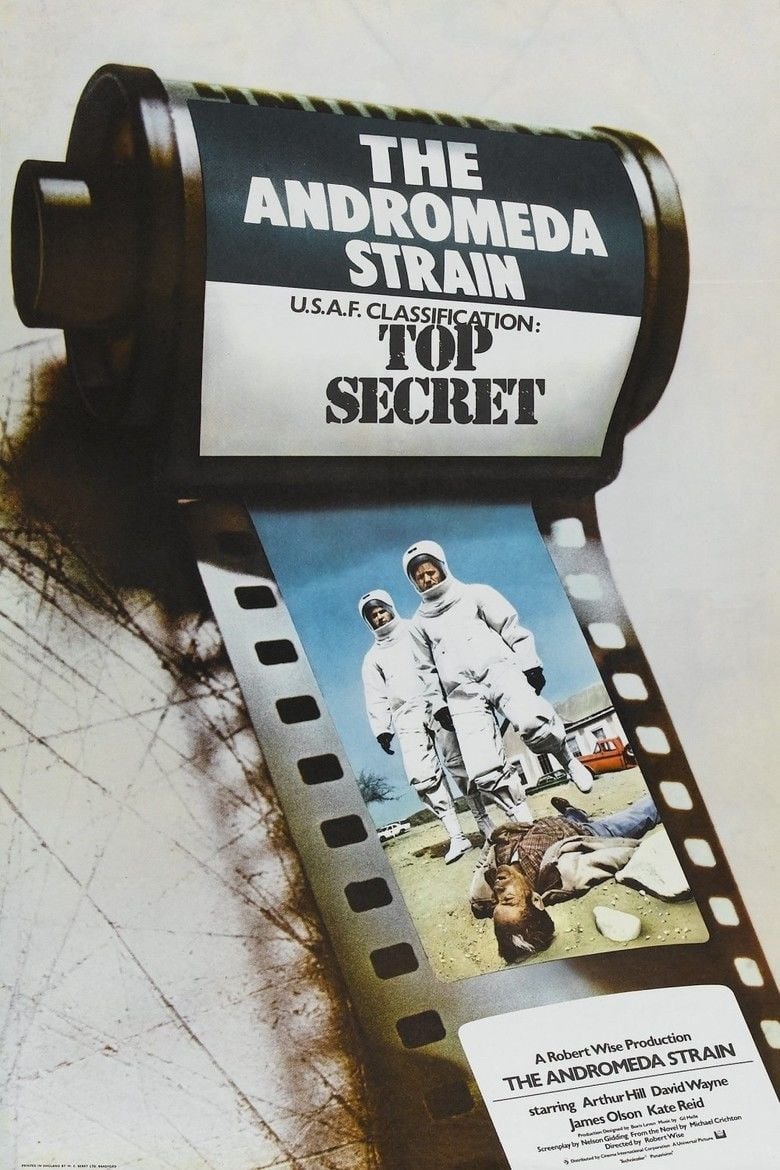 | ||||||||||||||||||||||||||||||||||
Release date March 12, 1971 (1971-03-12) (United States) Cast Arthur Hill (Dr. Jeremy Stone), (Dr. Charles Dutton), (Dr. Mark Hall), (Dr. Ruth Leavitt), (Karen Anson), (Jackson)Similar movies The Martian , Genesis , Your Inner Fish , First Life , Rise of Animals: Triumph of the Vertebrates , Kingdom of Plants 3D Tagline The picture runs 130 minutes!... The story covers 96 of the most critical hours in man's history!... The suspense will last through your lifetime! | ||||||||||||||||||||||||||||||||||
The andromeda strain 1971 original film trailer
The Andromeda Strain is a 1971 American science fiction film produced and directed by Robert Wise. Based on Michael Crichton's 1969 novel of the same name and adapted by Nelson Gidding, the film stars Arthur Hill, James Olson, Kate Reid, and David Wayne as a team of scientists who investigate a deadly organism of extraterrestrial origin. With a few exceptions, the film follows the book closely. The special effects were designed by Douglas Trumbull. The film is notable for its use of split screen in certain scenes.
Contents
- The andromeda strain 1971 original film trailer
- The andromeda strain official trailer 1 david wayne movie 1971 hd
- Plot
- Background
- Box office
- Critical response
- Awards and honors
- References
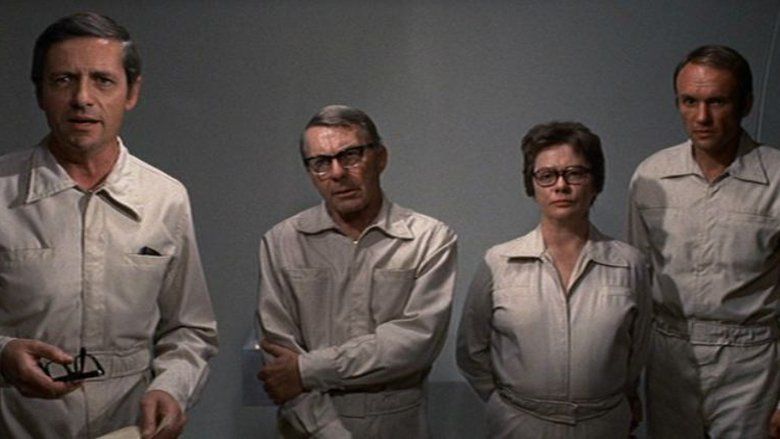
The andromeda strain official trailer 1 david wayne movie 1971 hd
Plot
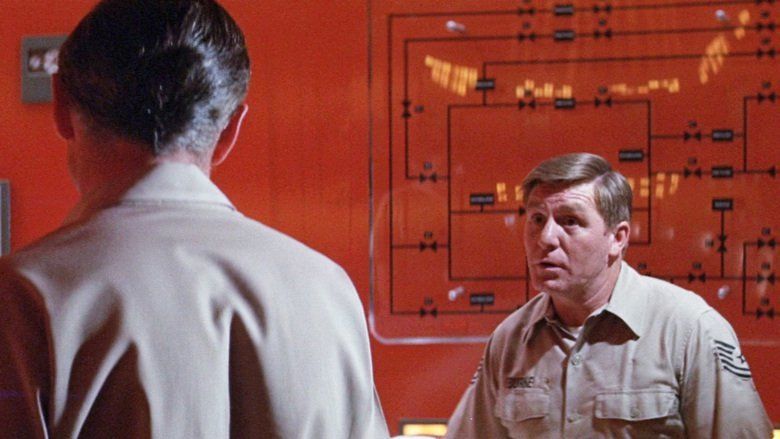
After a U.S. government satellite crashes near the town of Piedmont, New Mexico, almost all of the town's inhabitants die instantly. Suspecting that the satellite brought back an alien germ, the military activates an elite scientific team it had previously assembled for just this type of emergency.
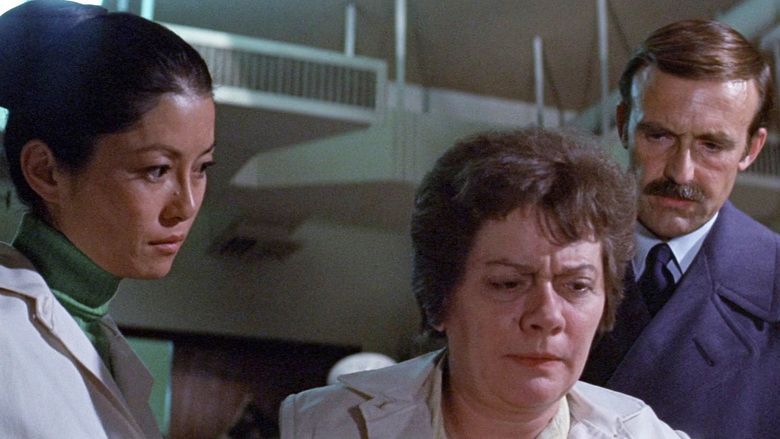
Dr. Jeremy Stone, the team leader, and Dr. Mark Hall, the team surgeon, are dropped in Piedmont by helicopter, where they search the town for the project "Scoop" satellite in space-suit-type protective uniforms. In a primitive medical office, they find the town's doctor had opened the satellite out of curiosity. Stone and Hall retrieve the Scoop and find two survivors in the town — a sixty-two-year-old town drunk and a six-month-old infant.
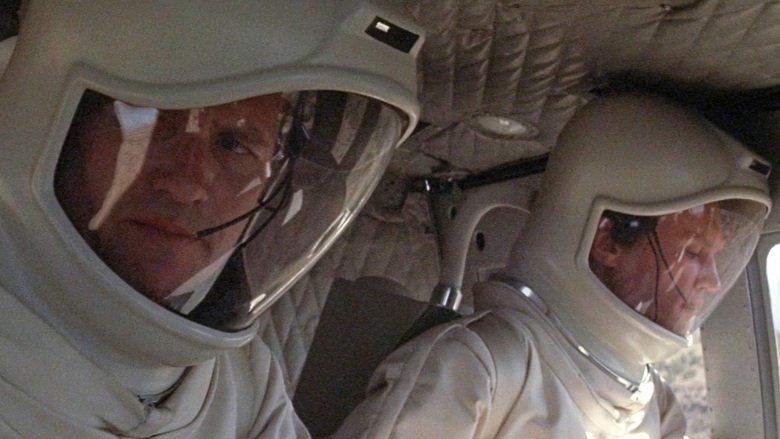
The entire team of four core research scientists, including Dr. Charles Dutton and Dr. Ruth Leavitt, are summoned from their academic and research appointments to arrive at a massive, secret, high-tech underground laboratory in Nevada, named Wildfire, where they undergo a full day of decontamination procedures, descending through several disinfection levels of the lab.
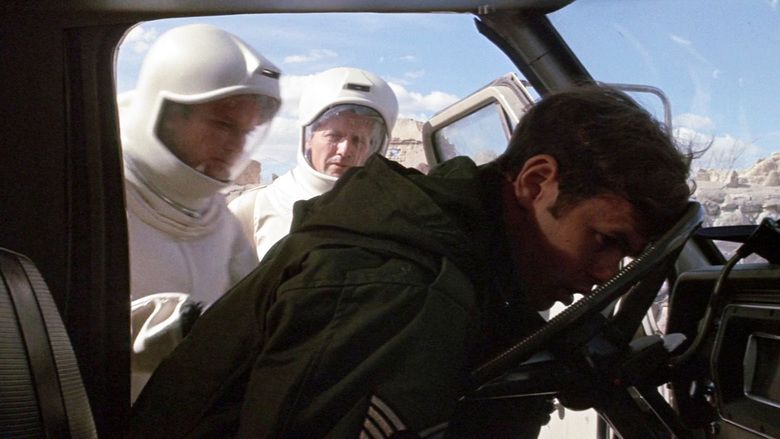
After searching with a powerful electron microscope, the team discovers the microscopic life form responsible for the deaths. The greenish, throbbing, new life form is assigned the code name Andromeda. Andromeda kills organisms almost instantly and appears to be highly virulent. While most of the team studies the organism in an attempt to figure out how it works, the team's doctor, Dr. Mark Hall, tries to find a cure by figuring out why the old man and the baby survived.
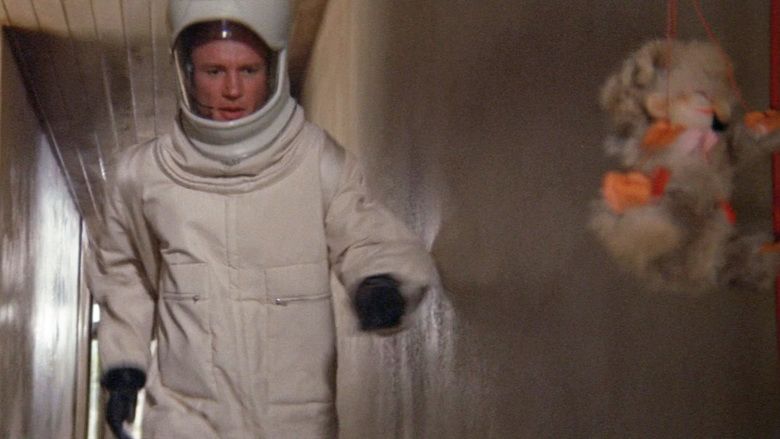
Meanwhile Dr. Stone, the creator of the Wildfire Lab, is accused by Dutton and Leavitt of designing Wildfire for purposes of biowarfare research. In another development, unknown to other members of the team, Ruth Leavitt's research on the germ is impaired by her epilepsy, which is set off by flashing, red computer lights in the facility.
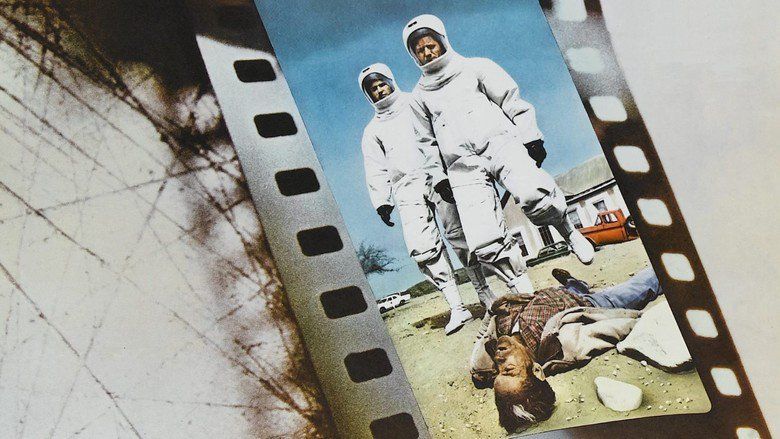
Just as Hall comes up with the answer (Andromeda can survive only within a narrow PH Blood range), Andromeda mutates into a form that degrades synthetic rubber and plastics and thus escapes the containment room adjacent to where Dr. Dutton is doing his research work. Once all the lab's seals start decaying from the Andromeda germ's escape, this triggers an automatic self-destruct mechanism designed to set off a nuclear explosion beneath the Wildfire complex, intended to incinerate all infectious agents before they can reach the open environment above.
Hall rescues Leavitt from an epilepsy attack set off by Wildfire's alarm system. Meanwhile, the team members studying Andromeda have learned that the alien microbes, having evolved in the harsh environment of outer space, would thrive on the energy of a nuclear explosion and would consequently be able to mutate into a supercolony of the germ, an action which could wipe out all life on Earth.
Having been entrusted with the only key that can shut down the self-destruct sequence before the five-minute countdown is up, Dr. Hall races against the clock and the lab's automated defenses to reach a substation before it is too late. Hall endures an attack by automated lasers as he crawls through the lab's central core, until at last he finds a working substation and disables the nuclear bomb with his key before collapsing.
Hall awakens in a hospital bed, where the scientists reveal that they've seeded clouds to cause rain to sweep Andromeda out of the atmosphere, where it will be destroyed by alkalinity of the Pacific Ocean. The movie ends with Stone testifying to a senator that, while they were able to defeat the alien pathogen this time, they may not be able to in the future.
Background
Film rights were bought by Universal for $250,000.
The cast of characters in the novel was modified for the film, most notably by replacing the male Dr. Peter Leavitt in the novel with the female Dr. Ruth Leavitt. Screenwriter Nelson Gidding suggested the change to Wise, who at first was not enthusiastic, as he initially pictured the sex-changed Dr. Leavitt as a largely decorative character reminiscent of Raquel Welch's character in the 1966 film Fantastic Voyage. When Gidding explained his take on Leavitt, Wise resolved the question by asking the opinion of a number of scientists, who were unanimously enthusiastic about the idea. Eventually Wise came to be very happy with the decision to make Leavitt female, as Kate Reid's Dr. Leavitt turned out to be, in his words, "the most interesting character" in the film. Another minor change was the character of Burton in the novel, who became Charles Dutton in the film; no reason was given for this name change.
The Andromeda Strain was one of the first films to use advanced computerized (or optical) photographic visual effects, with work by Douglas Trumbull, who had pioneered effects for 2001: A Space Odyssey, along with James Shourt and Albert Whitlock who worked on The Birds. Reportedly $250,000 of the film's budget of $6.5 million was used to create the special effects.
The film contained computer rendering, a mapped 3-D view of the rotating structure of the 5-story cylindrical underground laboratory in the Nevada desert named Project Wildfire. Biologist Dr. Jeremy Stone (Arthur Hill) turned on the animated computer simulation of the "electronic diagram which rotates to afford an overall view, or it can be stopped at any section. Detailed plans of the various levels and labs are also stored in the system..."
Crichton makes a cameo appearance in a non-speaking role during the scene where Dr. Hall is told to break scrub because he has to report to the Wildfire research facility.
Box office
The Andromeda Strain was a moderate box office success. Produced on a relatively high budget of $6.5 million, the film grossed $12,376,563 in North America, earning $8.2 million in US theatrical rentals. It was the 16th highest-grossing film of 1971.
Critical response
The opinion of critics is generally mixed, with some critics enjoying the film for its dedication to the original novel and with others disliking it for its drawn-out plot. Overall, the film has earned a 67% "Fresh" rating from the film review site Rotten Tomatoes, based on 24 reviews.
Awards and honors
The film was nominated for two Academy Awards:
References
The Andromeda Strain (film) WikipediaThe Andromeda Strain (film) IMDbThe Andromeda Strain (film) Rotten TomatoesThe Andromeda Strain (film) Roger EbertThe Andromeda Strain (film) Amazon.comThe Andromeda Strain (film) themoviedb.org
